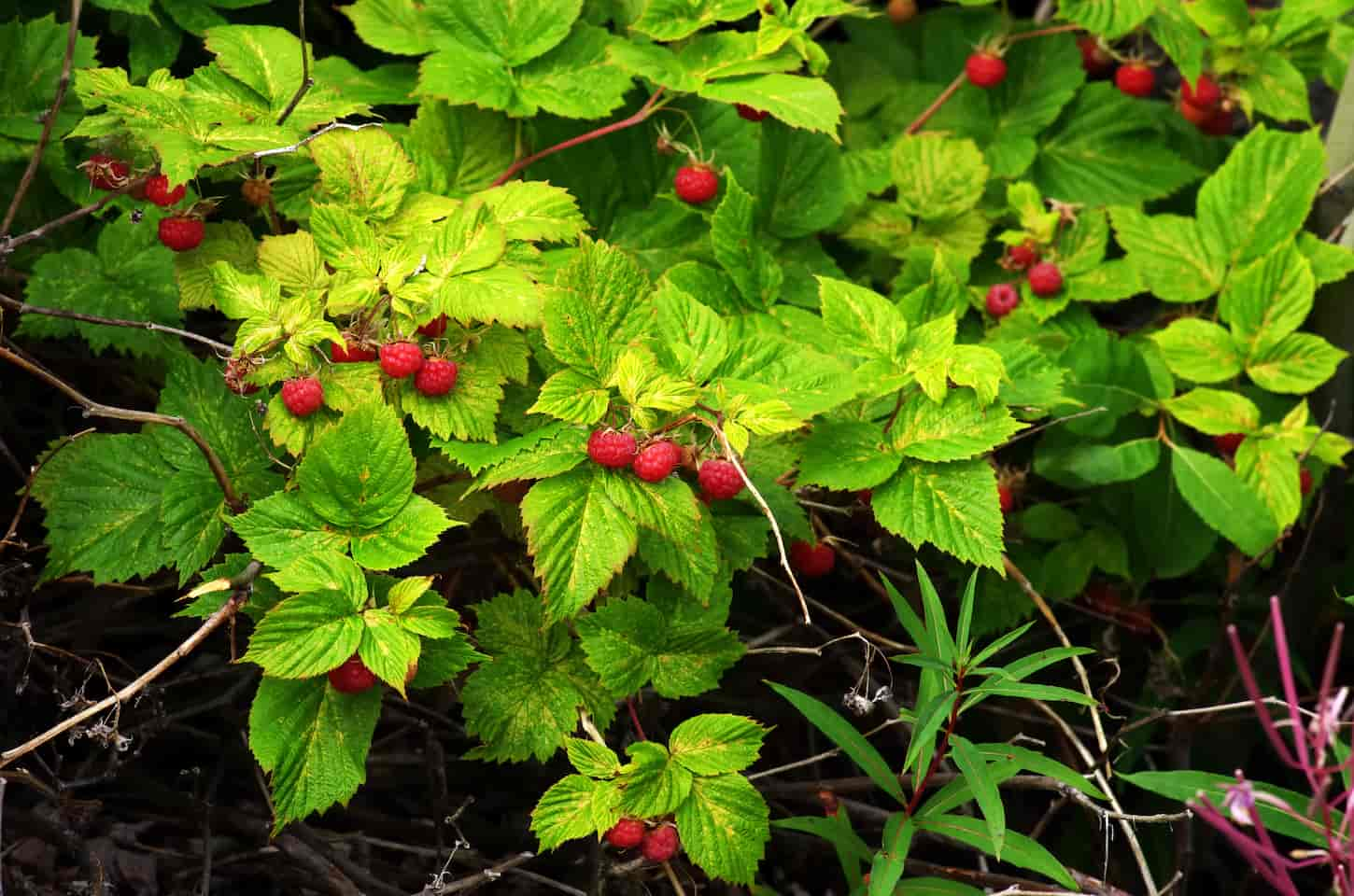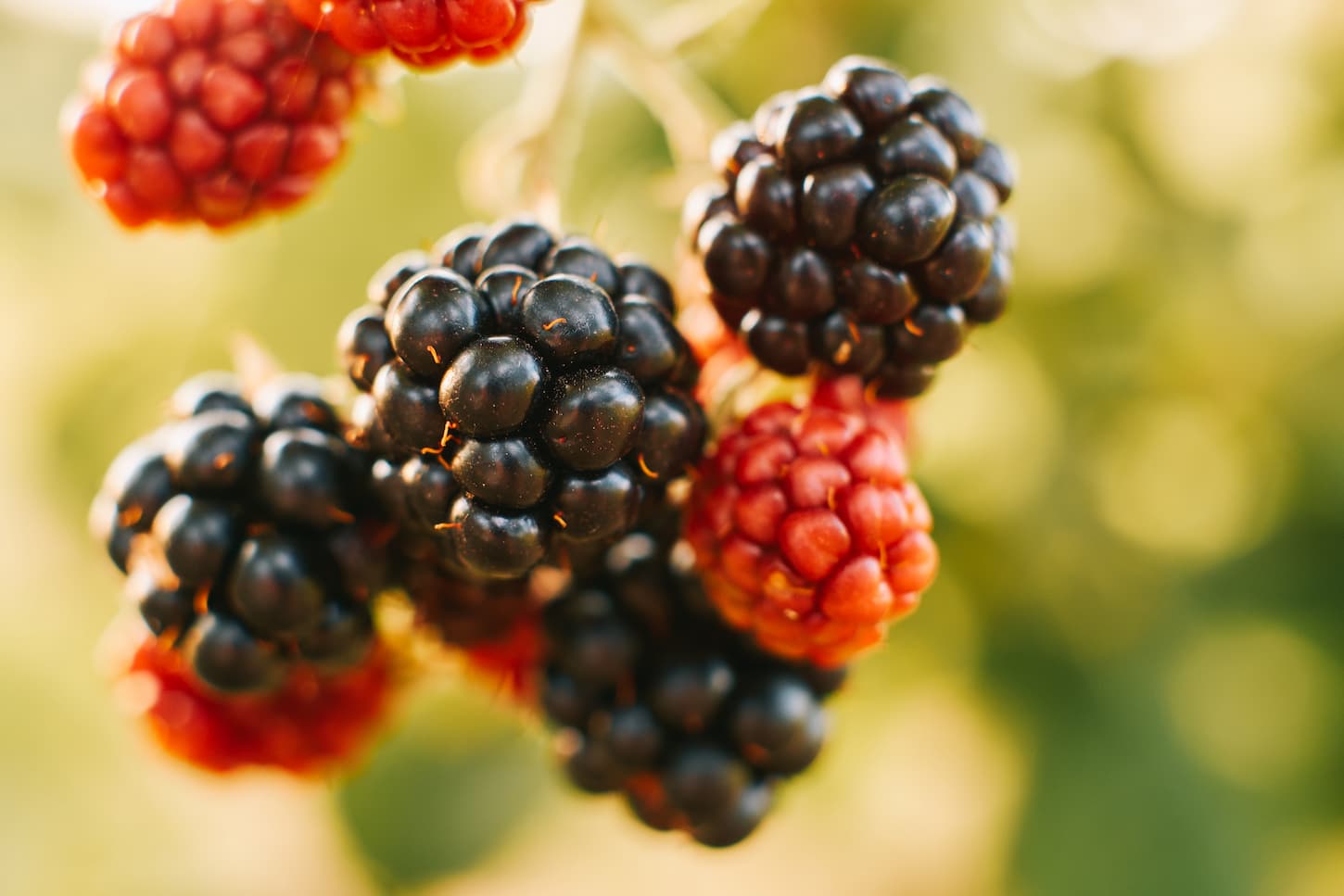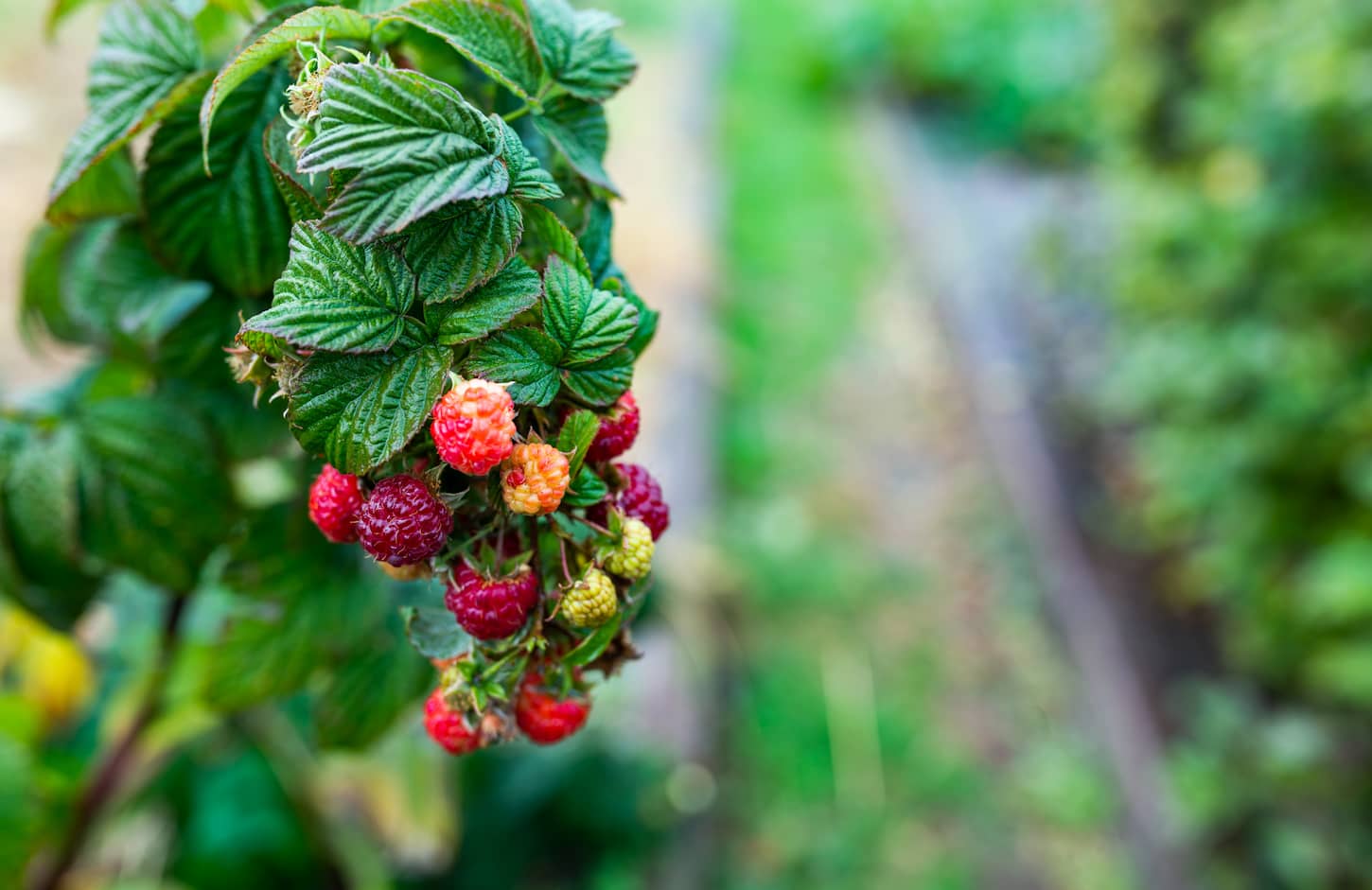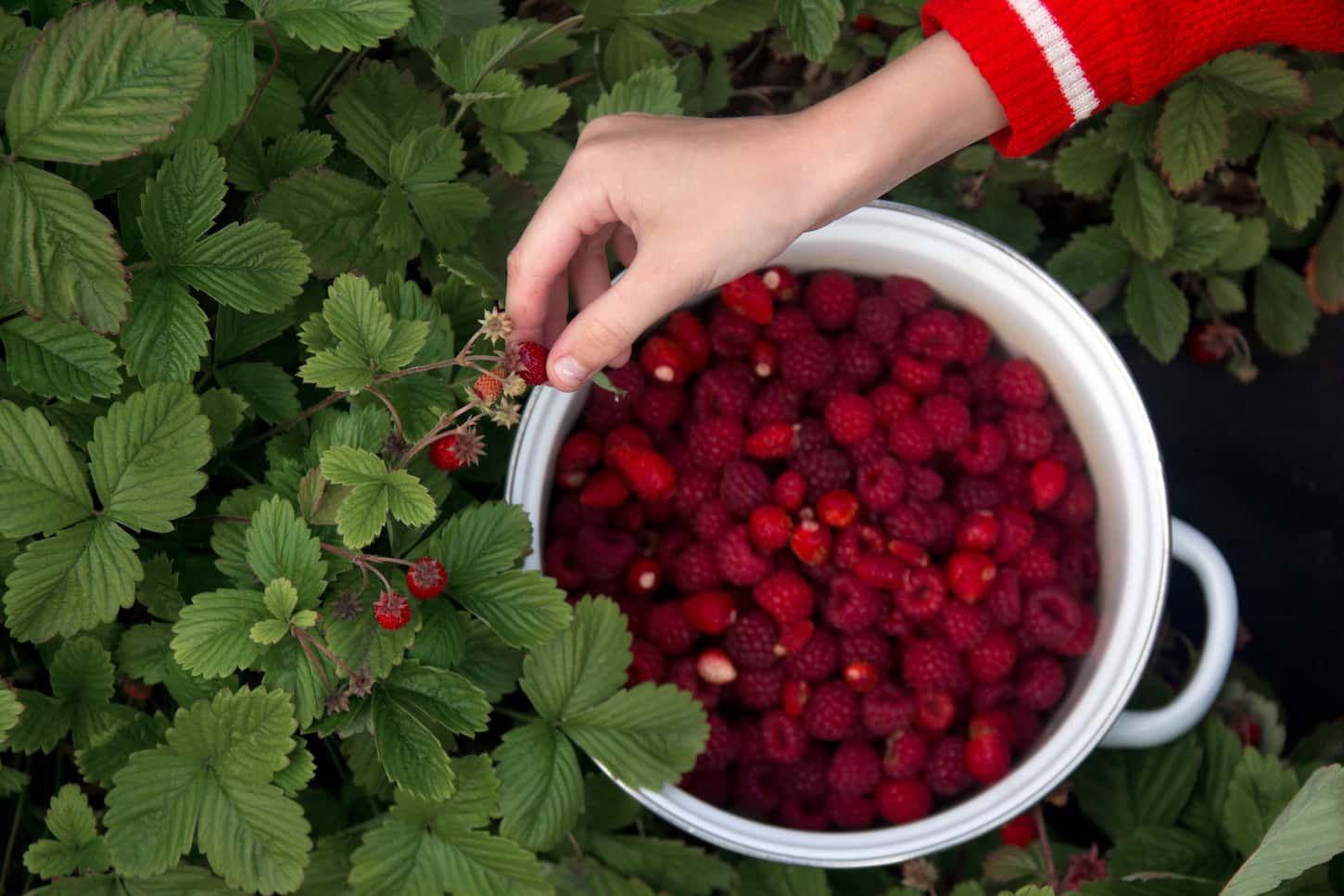Raspberries, which I recently learned are not true berries in the strict sense (because they emanate from one flower with multiple ovaries, while true berries stem from a single flower with one ovary and many seeds) need a good bit of sun, though mine tolerate some shade. Even so, do raspberries need full sun?
Raspberries require full sun for 6 to 8 hours a day, though the sunlight can be divided into morning and evening light to avoid sunburning the berries or sun scorching the leaves.
This does not mean that raspberries can’t be grown in a shady environment with partial sunlight, but this amazing fruit loves the sun. The more sun there is, the more raspberries there will be.
In this article, we will be taking a deeper dive into the number of sun raspberries need, if they can be affected by too much sun, and much more.

How Much Sunlight Do Raspberries Need?
Raspberries need just enough sunlight ranging from 6 to 8 hours a day, that is, they enjoy the sun all through the morning and a bit of sun in the afternoon.
The amount of sunlight will determine how a raspberry plant flourishes. Aside from the fact that sunlight is a prerequisite for photosynthesis (a process whereby plants create their food and generate oxygen), it also reduces the chances of fungi and disease infestation on the plants.
Where should you plant raspberries to get enough light?
It is important to plant raspberry bushes in an area or path that makes the sun available within its reach. You can as well plant raspberries in a shaded area but this will yield a low number of fruits from the raspberry bushes.
To enable an even and uniform reflection of sunlight on the raspberry plants, set the rows north to south. Rows that run from east to west usually generate sunburn on the leaves and yield (meaning sunburned or damaged fruit).
Plant raspberries during spring in a path open to sunlight and free from mighty winds. Your raspberries need fertile and well-drained soil and an atmosphere with sufficient air capacity for the plants.

Can Raspberries Grow in the Shade?
Raspberries, just like most brambles (a shrub for growing berries), can fully survive in partial shades, but the plant in such circumstances will produce less fruit than the one under the sun.
This is because the sun affects the raspberry canes (branches) by producing more flowers, and the flowers in turn produce the raspberries. So when there is no sun, there will be fewer flowers and fewer fruits; but luckily, it doesn’t change the sweetness of the raspberries.
Check out this article I wrote for more information: How Much Sun And Shade Can Berries Tolerate? A Complete Guide.
Can Raspberries Get Too Much Sun?
Raspberries can get too much sunlight and this can damage the leaves and cause sunburn on the raspberry fruit.
It is usually in the form of white coloring on the fruits of the raspberries. This is a result of the high temperature and radiation from the sun. It produces negative effects like discoloration of the raspberries, sunscald on leaves and the absence of moisture.
Too much sunlight on raspberries makes them unattractive and unpalatable. If used for commercial purposes, most consumers will not want to purchase damaged and discolored raspberries.
But if the raspberry appears red and only a little part is affected, it can still be consumed as not all consumers notice such mishaps. Also, it has no negative effect health-wise.

How do you protect raspberries from too much sun?
There are various ways to control too much sun on your raspberries and eliminate the side effects. Below are two control strategies:
- The use of shade cloth/fabrics
- Rotating containers used in planting dwarf raspberries
Tip #1: The use of shade cloth or fabrics
This is by far one of the trusted solutions to the problem of excess sunlight. Shade cloths are woven polyesters with different densities which help to reduce heat, increase ventilation and allow sufficient light on plants.
They can be placed in a tent-like manner or in a fence-like way toward the direction of the sun. The YGS Perfect Sunblock Shade Cloth (click here to see it on Amazon) is a suitable example of a durable shade cloth used for protecting plants and mitigating heat from sunlight.
Tip #2: Rotating containers of dwarf raspberries
Raspberries that are grown in containers (some heritage varieties and the “raspberry shortcake” can be grown easily in containers) can be easily protected from too much sun.
As opposed to raspberries planted in the ground, the containers can be rotated and moved from a sunny layer to a shady path. This will help protect the raspberries from too much sun.

Why Do Raspberries Need Sunlight?
Raspberries need sunlight because like other plants, they undergo the process of photosynthesis which is crucial for the production of energy that they use for growth and development.
Photosynthesis is a process whereby plants use energy from the sun to “make their own food” while giving off oxygen as a waste product. Raspberries must have adequate sunlight to properly undergo photosynthesis.
In a situation where they are not provided with adequate sunlight, this would lead to deficient growth and subsequently a poor harvest.

Next Steps
Now, if that perfect spot you had picked out for your raspberry patch is shaded, don’t despair. Raspberries can still grow in the shade, with some important caveats and conditions.
Make sure you go read about all of the important details in my article here: Can Raspberry Bushes Grow in the Shade?
Resources
Learning from your own experience is essential, but learning from others is also intelligent. These are the sources used in this article and our research to be more informed as homesteaders.
- 30, Marty Wingate Updated March, and Marty Wingate. “Growing Juicy Raspberries in Your Garden Is Easy-Here’s How.” Better Homes & Gardens, www.bhg.com/gardening/vegetable/fruit/how-to-grow-raspberries.
- “All About Raspberries.” Burpee, 21 June 2021, www.burpee.com/blog/article10256.html.
- “Choosing a Location for Raspberry Plants – Stark Bro’s.” Stark Bro’s Nurseries & Orchards Co., www.starkbros.com/growing-guide/how-to-grow/berry-plants/raspberry-plants/location.
- Fernandez, Gina, et al. “Site Selection.” NC State Extension Publications, content.ces.ncsu.edu/southeast-regional-caneberry-production-guide/site-selection-1.
- Old Farmer’s Almanac. “Raspberries.” Old Farmer’s Almanac, www.almanac.com/plant/raspberries.
- Starr, Kimberly. “Can Raspberry Bushes Grow in the Shade?” Backyard Homestead HQ, 5 July 2021, backyardhomesteadhq.com/can-raspberry-bushes-grow-in-the-shade/.
